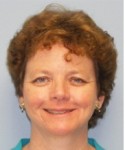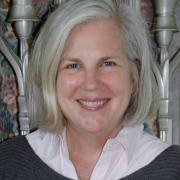The Boss, The Big Man, Loss … and Caregiving
From Your (Wo)manInWashington blog
MOTHERS changing the conversation @ www.MothersOughtToHaveEqualRights.org
While I hunted for those last elusive hidden eggs, writer and end-of-life issues expert Janice Lynch Schuster graciously permitted me to cross post her thoughtful piece about Bruce, Clarence, aging and care. It originally appeared on the Disruptive Women in Health Care blog.
 When Clarence Clemons died last spring, the air went out of the room. As his longtime musical partner and friend, Bruce Springsteen, told Rolling Stone a few weeks ago, Clarence was as “elemental as rain,” and there was and will be no replacing him. The Big Man joined the band, and the rest of us sang along for nearly 30 years.
When Clarence Clemons died last spring, the air went out of the room. As his longtime musical partner and friend, Bruce Springsteen, told Rolling Stone a few weeks ago, Clarence was as “elemental as rain,” and there was and will be no replacing him. The Big Man joined the band, and the rest of us sang along for nearly 30 years.
So I wondered, as I headed out Sunday night to the Washington, DC, stop of Springsteen’s “Wrecking Ball” tour, how and whether the Boss would talk about it. We knew he’d assembled a horn section featuring Clarence’s nephew, Jake, on saxophone. He told Rolling Stone that we would all acknowledge and miss Clarence together, but I wondered just how he would orchestrate it.
After all, we are very uncomfortable, in our public and private lives, talking about death and dying, loss and grief. Instead, we talk about this world as if it’s ours to inhabit forever; we believe that if we just exercise and eat right and have some sort of good karma, we’ll be here in perpetuity. Never mind that life is, after all, 100 percent fatal. We deny and avoid and disregard that reality. We dye our hair, replace our knees, run marathons … we do our level best to do what we cannot.
My friend, Dr. Joanne Lynn, gives talks around the country on end-of-life issues. She engages the crowd by asking who among them would prefer to die of cancer. No takers. Heart disease? Maybe one or two. “Well, then the rest of us are left to die of frailty of old age,” she says. We won’t get lucky and die on the golf course or in our lover’s arms, or even in our sleep. Instead, for the majority of us now alive, death will come after we live for three-odd years with a fatal illness. We will spend much of that time too sick and disabled to care for ourselves, and we will rely on friends, families, and strangers to help us with what the doctors call ADLs (activities of daily living), and what the rest of us think of as just getting by.
In the process, we are likely to bankrupt ourselves, and come close to bankrupting our families. According to a study from the National Alliance for Family Caregiving, the average person aged 50 or older who stops work to become a full-time caregiver will forego more than $300,000 worth of wages, Social Security and pension benefits. Although millions of men are joining the ranks of caregivers, women continue to provide the bulk of the care. Their caregiving work takes a toll on the economy—Gallup puts the cost in lost productivity at more than $25 billion—and on caregivers themselves—who are more prone than their counterparts to suffer from physical and mental health problems.
It’s a pretty bleak future, really, for the millions of boomers now cruising toward old age—and beyond. Each day, some 10,000 of us turn 65—a rate that will continue for the next 18 years. Thanks to improved public health and better medical care, we will get to live even longer lives than our parents did, and literally millions of us will live to be “old old.” In fact, the fastest growing segment of the American population is people aged 85 and over.
So what can we do in the interim? For starters, we can talk about what we face. We can share our personal stories—almost everyone of a certain age has one—but more than that, we can figure out how our stories describe our age, and how we can use their power to create better systems for frail older adults. We can create a system where it’s just as easy to get home-delivered meals as it is to get an implantable defibrillator. We can devise strategies that help caregivers, supporting them emotionally, financially, and socially. We can learn and understand that we are all in this together, that our journeys are particular but not unique to us, and that there are moments to celebrate and moments to grieve.
That’s the gift Bruce Springsteen wound up giving the crowd on Sunday night in Washington, DC, and a gift he’s likely to spread around the country as he continues his nonstop tour this spring. When he took the stage, he noted that he was there with new friends, but we were all surely missing our old friends. And at the end of the night, when he sang, “When the change was made uptown and the Big Man joined the band,” he stopped and said, “I’m gonna stop right here.” He gestured to the crowd, and it responded with a roar—a sad, mournful, celebratory, joyful roar to honor Clarence and the music he gave us. That’s what we need a little more of these days, a collective voice that not only gets us through the night, but gets us through where we are.
‘Til next time,
Your (Wo)Man in Washington
Click here to read more posts from Your (Wo)manInWashington blog.

The views and opinions expressed in this post are those of the author(s) and do not necessarily reflect those of MomsRising.org.
MomsRising.org strongly encourages our readers to post comments in response to blog posts. We value diversity of opinions and perspectives. Our goals for this space are to be educational, thought-provoking, and respectful. So we actively moderate comments and we reserve the right to edit or remove comments that undermine these goals. Thanks!